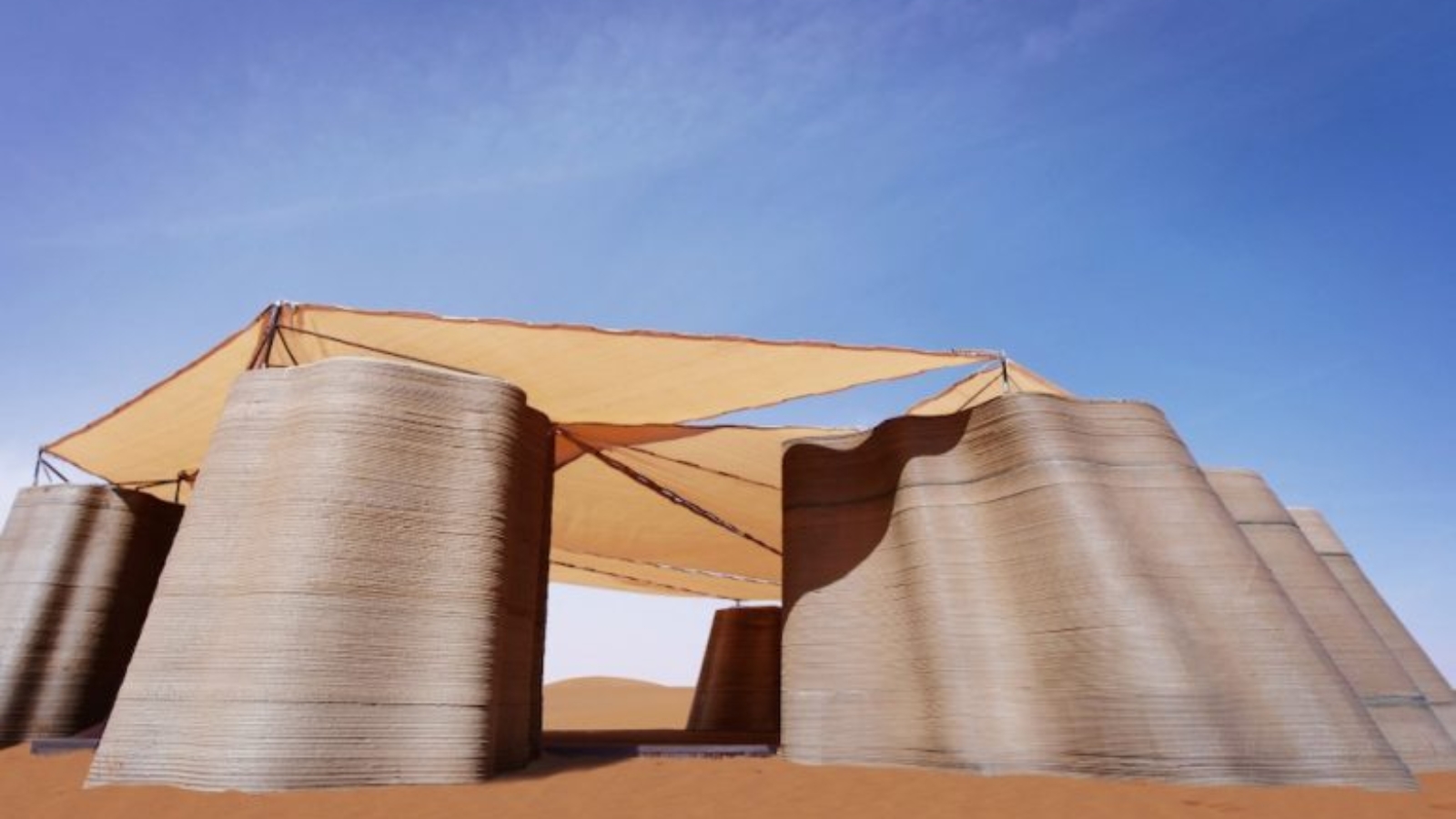While marine and forest restoration efforts can often get more attention, desert restoration is also a vital part of environmental efforts. In China, for instance, there has been a growing interest in restoring desert ecosystems with the goal of reducing the risk of sandstorms and combating desertification through the planting of trees, shrubs and grasses to create a “desert-locking forest.” The work involved in planting and maintaining these forests in the arid desert is, as one might imagine, extremely arduous. In a bid to improve the conditions for the volunteer rangers on desert duty, sustainability-focused design studio designRESERVE has built a modular shelter system, called Desert Ark, in the Tengger Desert in Inner Mongolia.

Desert Ark consists of a series of nine modular shelter units (i.e. a shower room, dining area, kitchen) that have been assembled around a temporary foundation made of crushed stone, concrete canvas and plastic pallets secured together with galvanized steel square pipe. The whole “camp” spans 150 square meters, with the shelter modules assembled around the circular foundation, creating a communal, largely sheltered space in the middle.

Manufacturing on Demand
The Desert Ark units themselves are 3D printed using a robotic construction 3D printing technology using a sand-based material. The structures were designed to have a wavy external shape in order to better withstand the desert winds, while the layered texture of the printing process makes for an almost seamless fitting into the sandy desert environment. In other to provide relief from the extreme temperatures of the desert (from -30 degrees Celsius in winter to 45 degrees Celsius), the walls have a built in cavity that provides insulation.

Rather than build the shelters on-site, the 3D printed modules were prefabricated in the city of Wuxi with each unit divided into sections to optimize transport and assembly. Once printed, the pieces were all transported by truck to the desert location, where they were assembled with the help of local herders within two days. Notably, the printed shelters can sit directly on the sand and can be easily disassembled for easy relocation. A retractable canopy was also installed, along with solar panels and water systems for off-grid power and functionality.

“As China’s first 3D concrete-printed structure in desert environment, the project not only supports ecological restoration in ethnic minority region of Inner Mongolia, but also serves as an architectural prototype for future extraterrestrial habitat of humankind,” reads the Desert Ark project description. As our readers will know, 3D printing is being positioned as a highly promising solution for Martian and Lunar habitats, since it can build on location and utilize local building materials, like regolith.
You might also like:
Aerial AM enables the construction of remote infrastructure: Aerial AM – basically flying 3D printers – has been fascinating researchers for years, but the natural instability of a drone in flight makes traditional layer-by-layer fabrication nearly impossible. To overcome this, Amir Barati Farimani, associate professor of mechanical engineering, has equipped drones with magnetic blocks to allow for precise pick-and-place assembly and a large language model (LLM) that can translate high-level design goals like ‘build a bridge’ into executable plans.
* This article is reprinted from 3D Printing Media Network. If you are involved in infringement, please contact us to delete it.
Author: Tess Boissonneault


Leave A Comment